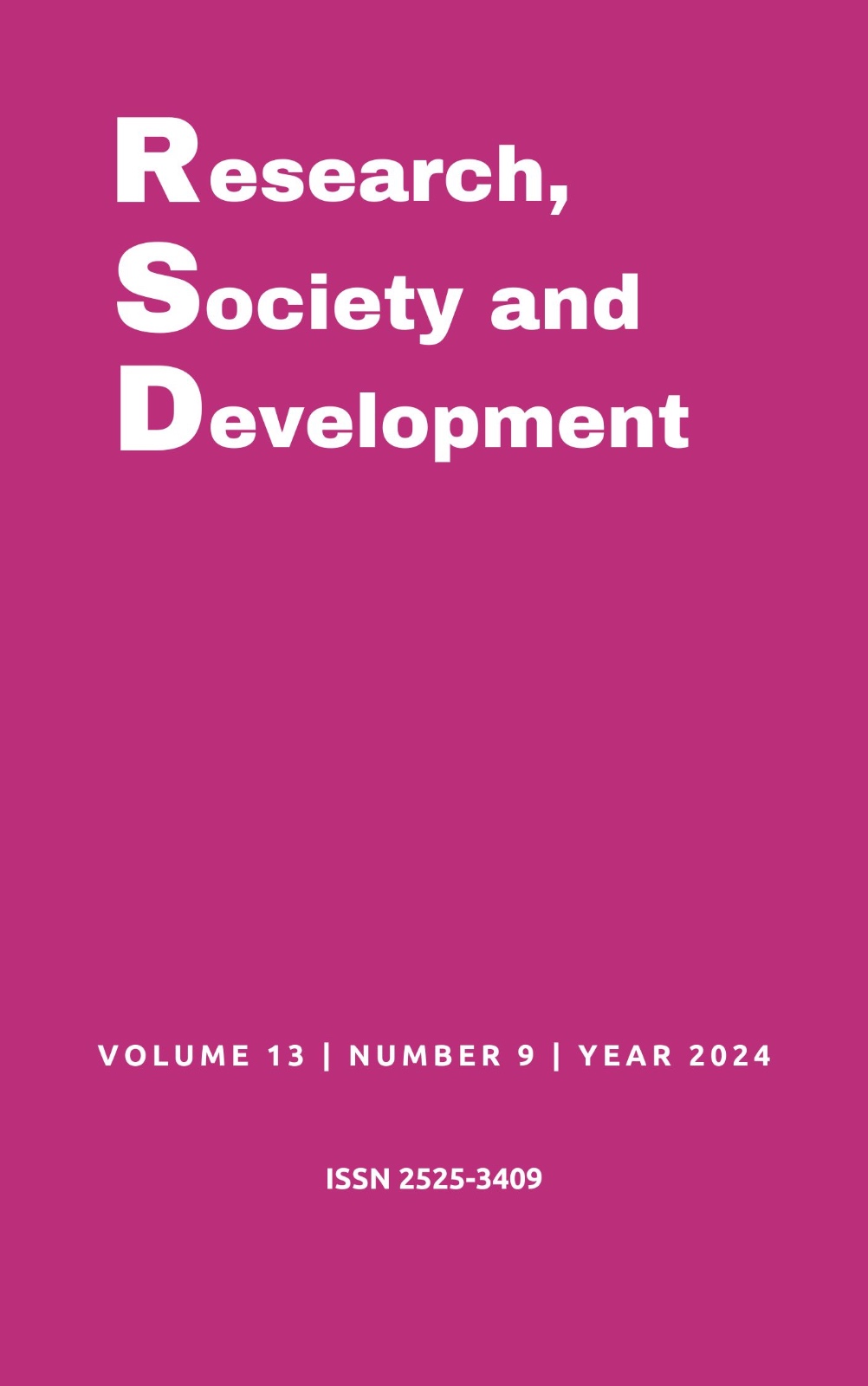Management of anaphylactic shock in the emergency department: A literature review
DOI:
https://doi.org/10.33448/rsd-v13i9.46826Keywords:
Anaphylactic shock; Emergency management; Epinephrine; Airway; Intravenous fluids; Emergency protocols; Patient education.Abstract
Anaphylactic shock is a severe and potentially fatal allergic reaction that requires immediate intervention. This literature review aims to analyze the management strategies for anaphylactic shock in the emergency department, emphasizing the importance of early administration of epinephrine, airway maintenance, and intravenous fluid administration. The research was conducted in the databases Google Scholar, LILACS, and SCIELO, covering publications from 2000 to 2024 in Portuguese, English, and Spanish. The results indicate that the lack of knowledge and adequate training among healthcare professionals can delay treatment, exacerbating the severity of the condition. Furthermore, the review highlights the need for standardized protocols and continuous education of healthcare professionals to improve patient outcomes. Patient education and prevention of future reactions are critical components of anaphylactic shock management, underscoring the importance of preventive strategies and long-term follow-up.
References
Anderson, J. L., & Morrow, D. A. (2017). Acute coronary syndrome. New England Journal of Medicine, 376(14), 1283-1295.
Bohlke, K., Davis, R. L., DeStefano, F., Marcy, S. M., Braun, M. M., Thompson, R. S., ... & Mullooly, J. P. (2003). Epidemiology of anaphylaxis among children and adolescents enrolled in a health maintenance organization. Journal of Allergy and Clinical Immunology, 113(3), 536-542.
Brown, S. G. (2004). Clinical features and severity grading of anaphylaxis. Journal of Allergy and Clinical Immunology, 114(2), 371-376.
Cardona, V., Ansotegui, I. J., Ebisawa, M., El-Gamal, Y., Fernandez Rivas, M., Fineman, S., ... & Sheikh, A. (2020). World allergy organization anaphylaxis guidance 2020. World Allergy Organization Journal, 13(10), 100472.
Ibanez, B., James, S., Agewall, S., Antunes, M. J., Bucciarelli-Ducci, C., Bueno, H., ... & Widimsky, P. (2018). 2017 ESC Guidelines for the management of acute myocardial infarction in patients presenting with ST-segment elevation. European Heart Journal, 39(2), 119-177.
Järvinen, K. M., & Sicherer, S. H. (2012). Epidemiology of anaphylaxis. Immunology and Allergy Clinics, 32(1), 1-17.
Kemp, S. F., Lockey, R. F., Simons, F. E., & World Allergy Organization ad hoc Committee on Epinephrine in Anaphylaxis. (2008). Epinephrine: the drug of choice for anaphylaxis. A statement of the World Allergy Organization. Allergy, 63(8), 1061-1070.
Lieberman, P., Nicklas, R. A., Randolph, C., Oppenheimer, J., Bernstein, D., Bernstein, J., ... & Wallace, D. (2015). Anaphylaxis—a practice parameter update 2015. Annals of Allergy, Asthma & Immunology, 115(5), 341-384.
Muraro, A., Roberts, G., Worm, M., Bilò, M. B., Brockow, K., Fernández Rivas, M., ... & Sheikh, A. (2014). Anaphylaxis: guidelines from the European Academy of Allergy and Clinical Immunology. Allergy, 69(8), 1026-1045.
Pumphrey, R. S. (2000). Lessons for management of anaphylaxis from a study of fatal reactions. Clinical and Experimental Allergy, 30(8), 1144-1150.
Ring, J., Beyer, K., Biedermann, T., Bircher, A., Duda, D., Fischer, J., ... & Worm, M. (2014). Guideline for acute therapy and management of anaphylaxis. Allergo Journal International, 23(3), 96-112.
Sheikh, A., Shehata, Y. A., Brown, S. G., & Simons, F. E. (2009). Adrenaline for the treatment of anaphylaxis: Cochrane systematic review. Allergy, 64(2), 204-212.
Simons, F. E. (2010). Anaphylaxis. Journal of Allergy and Clinical Immunology, 125(2), S161-S181.
Simons, F. E., Ardusso, L. R., Bilò, M. B., El-Gamal, Y. M., Ledford, D. K., Ring, J., ... & World Allergy Organization. (2011). World Allergy Organization guidelines for the assessment and management of anaphylaxis. World Allergy Organization Journal, 4(2), 13-37.
Simons, F. E., Ardusso, L. R., Bilò, M. B., El-Gamal, Y. M., Ledford, D. K., Ring, J., ... & World Allergy Organization. (2015). Update: World Allergy Organization anaphylaxis guidelines: 2015. World Allergy Organization Journal, 8(1), 32.
Simons, K. J., & Simons, F. E. (2012). Epinephrine and its use in anaphylaxis: current issues. Current Opinion in Allergy and Clinical Immunology, 12(4), 354-361.
Sicherer, S. H., & Sampson, H. A. (2014). Food allergy: Epidemiology, pathogenesis, diagnosis, and treatment. Journal of Allergy and Clinical Immunology, 133(2), 291-307.
Turner, P. J., Jerschow, E., Umasunthar, T., Lin, R., Campbell, D. E., & Boyle, R. J. (2017). Fatal anaphylaxis: Mortality rate and risk factors. Journal of Allergy and Clinical Immunology, 139(2), 556-567.
Wood, R. A., Camargo Jr, C. A., Lieberman, P., Sampson, H. A., Schwartz, L. B., Zitt, M., & Collins, M. (2014). Anaphylaxis in America: the prevalence and characteristics of anaphylaxis in the United States. Journal of Allergy and Clinical Immunology, 133(2), 461-467.
Worm, M., Moneret-Vautrin, A., Scherer, K., Lang, R., Fernandez-Rivas, M., Cardona, V., ... & Beyer, K. (2014). First European data from the network of severe allergic reactions (NORA). Allergy, 69(10), 1397-1404
Downloads
Published
How to Cite
Issue
Section
License
Copyright (c) 2024 Felipe de Abreu Medeiros; Lucas Hosken Vieira Oliveira; Renato Pereira Brandt; Rafael Ney Silva; Matheus Eduardo Siqueira da Silva de Araújo; Vitória de Lima Fujinami Tano; Pedro Gabriel Kaefer de Oliveira; Milena Goulart da Fonseca; Wesley Souza Silva; Camila de Oliveira Passos Rodrigues Dayube; Henrique Souza Costa; Carlos Eduardo Pinheiro Leal Brigido; Charles Bonatti do Vale Silva; Mayara Duarte Silva; Gustavo Giacomazzi

This work is licensed under a Creative Commons Attribution 4.0 International License.
Authors who publish with this journal agree to the following terms:
1) Authors retain copyright and grant the journal right of first publication with the work simultaneously licensed under a Creative Commons Attribution License that allows others to share the work with an acknowledgement of the work's authorship and initial publication in this journal.
2) Authors are able to enter into separate, additional contractual arrangements for the non-exclusive distribution of the journal's published version of the work (e.g., post it to an institutional repository or publish it in a book), with an acknowledgement of its initial publication in this journal.
3) Authors are permitted and encouraged to post their work online (e.g., in institutional repositories or on their website) prior to and during the submission process, as it can lead to productive exchanges, as well as earlier and greater citation of published work.

